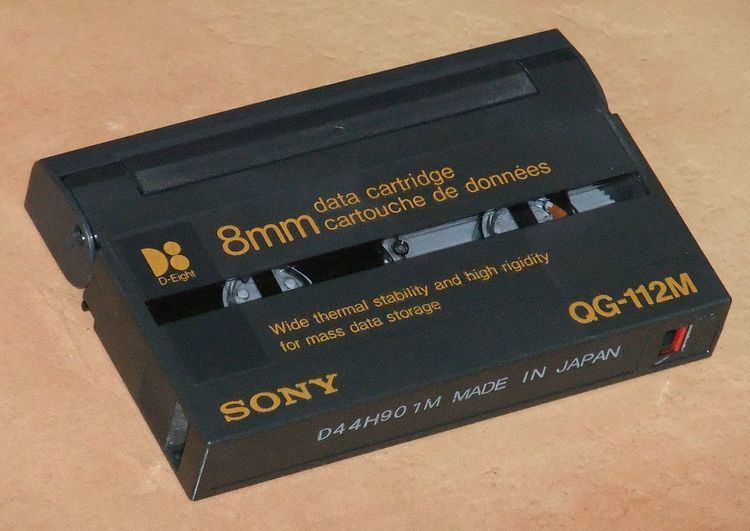 | ||
The 8 mm Backup Format is a magnetic tape data storage format used in computer systems, pioneered by Exabyte Corporation. It is also known as Data8, often abbreviated to D8 and is written as D-Eight on some Sony branded media. Such systems can back up up to 40 GB of data depending on configuration. The tapes used are mechanically the same as the tapes used in 8 mm video format recorders and camcorders.
Contents
- Generations
- Compatibility between tapes and drives and native capacities GB
- Exabyte 8 mm
- Mammoth
- Mammoth 2 M2
- References
Until the advent of AIT, Exabyte were the sole vendor of 8 mm format tape drives. The company was formed with the aim of taking the 8 mm video format and making it suitable for data storage. They did so by building a reliable mechanism and data format that used the common 8 mm video tape technology that was available then. This was the first form of helical scan tape used commercially for data storage.
Exabyte's first 8 mm tape drive was made available in 1987. This was followed up with their Mammoth tape drive in 1996, and the Mammoth-2 (M2) in 1999.
Exabyte's drive mechanisms were frequently rebranded and integrated into UNIX systems.
Generations
NOTE: The AIT and VXA formats and some other less common formats also use 8 mm wide tape, but are completely incompatible.
Compatibility between tapes and drives and native capacities (GB)
Legend:
Exabyte 8 mm
These drives use Metal Particle (MP) tape.
Mammoth
These drives use Advanced Metal Evaporated (AME) tape, but could also read (but not write) MP tapes.
Mammoth-2 (M2)
These drives used Advanced Metal Evaporated (AME) tape with an 2 m integrated cleaning tape header called Smart Clean.
